Believe it or not, Peru is a multicultural country, which is beautifully reflected in the music that’s evolved here. Music and dance are highly influential parts of Peruvian culture. Those artful mestizo sounds and movements are the heartbeat of Latin America! Here are the Rhythms of Peru and discover fusion:
A Short Geography Lesson
Apart from being multicultural, Peru is geographically varied. In a space smaller than the state of Alaska and almost twice the size of Texas, there’s a coast, desert, jungle, and mountains. Each of these different regions naturally formed their own musical styles (and instruments), isolated from the outside world by their terrain. Then, as intercommunication grew across the country, they were influenced by other musicians, and new, blended music emerged.
Here, it’s believed that the landscape one lives in crafts their very personality. Coastal people are said to be liberal and warm; mountain people are said to be conservative and cold, jungle people are said to be sensual and wild and desert people…well, they don’t have a dedicated stereotype because the desert is right on the coast. Whether all of that’s true or not, each of those lifestyles is expressed through Peruvian music!
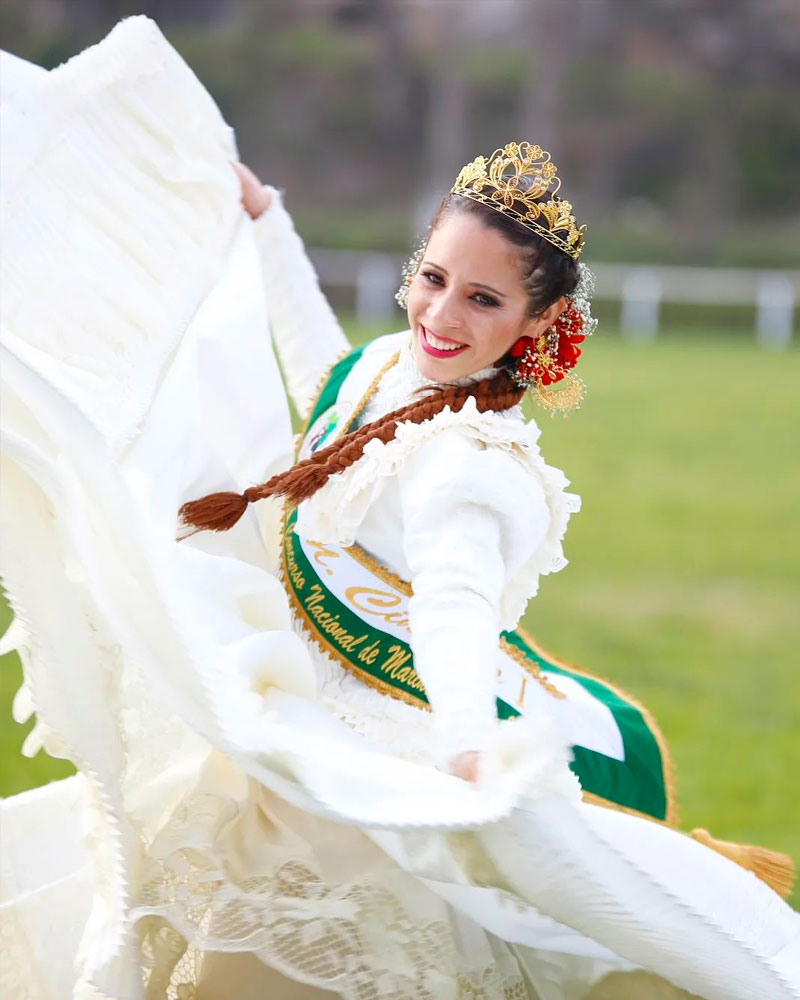
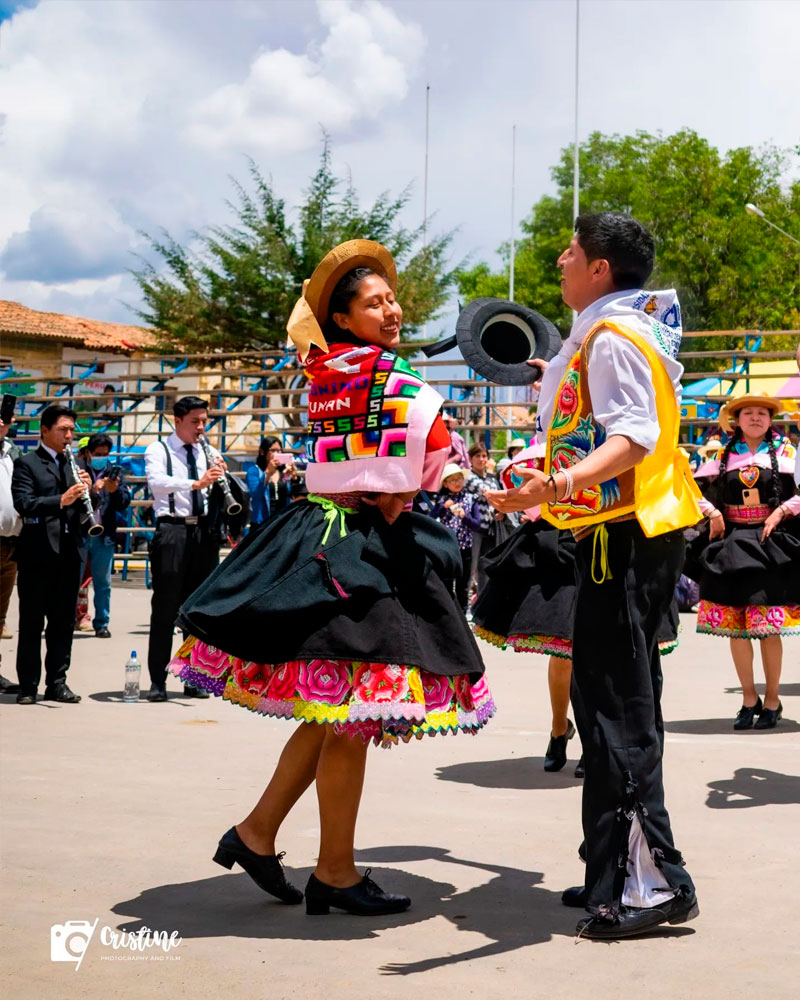
A Short History Lesson
Peru has a long and interesting history of altibajos (ups and downs), happiness and heartache, of triumph and defeat. It’s become a melting pot of many assorted people groups.
| 13,000 BC | The first settlers arrive in Peru, having migrated from Europe across the Bering Strait and south through the Americas. Many ethnic and cultural groups are formed in different parts of the country and develop independently. |
| 2600 BC | The oldest city in the Americas, Caral, is established near Lima. Across the country, a variety of ancient civilizations develop in isolation. |
| 1200 | The Inca Empire began to build power in Cusco and expanded to cover 4000 km from south Colombia to north Chile – 6 countries and 14 million people. They exercised control over various ethnic groups and implemented a common religion and language (Quechua). The Qapaq Ñan, the Inca Trail, connected the empire, allowing cultural and commercial exchange. |
| 1532 | The Spanish arrived, interested in gold and silver mining, and dismantle the Inca Empire. They overlay pre-Inca and Inca traditions with European ones, but the former never die out. They also bring African slaves with them. |
| 1821 | Peru was liberated from Spanish rule but continued to be influenced by their presence. African slaves continued to be imported until the 1850s. |
| 1980 | The Sendero Luminoso (Shining Path) terrorist group arrives and oppresses the people of the highlands, destroying their way of life, killing many, and forcing both migration and involuntary participation in their ranks. |
As Peruvian novelist José María Arguedas wrote, this is truly a country “of all bloods.”
The Musical Outcome
Now that we know the geographic and historical influences that have shaped today’s colorful Peruvian musical scene, let’s jump in!
Andean
The Andean highlands of Peru stretch through the middle of the country from north to south. Communities of farmers are scattered sparsely through the vast, endless landscape, and the culture is highly focused on connection with the Pachamama, or Mother Earth. The majority of Peru’s Quechua-speaking people (the language of the Incas) live in the mountains and work the land. Music from these regions is sometimes in the native language and sometimes in Spanish.
The highlands have formed a culture of their own over the years, and that’s deeply obvious through their music. These communities were also the victims of terrorism’s onslaught in the 1980s, and it left a traumatizing mark on families and society as a whole as they endured violence, forced migration, and heavy oppression. These sentiments can also be felt through Andean music.
Instruments: Andean harp, violin, guitar, charango (Andean lute) and siku/zampoña/antara (Andean pan flute), mandolin, saxophone, accordion, flute, pututu (conch shell), clarín cajamarquino (long, thin wind instrument), roncoco, clarinet, quena (wind instrument similar to a flute), bandurria cusqueña (many-stringed guitar-like instrument)
Huayno
This is the oldest traditional folkloric music of Peru, stemming from pre-hispanic origins and expressing the deepest emotions of the Andean people. It’s festive yet melancholic and sings of the relationship of man with nature, romantic relationships, poverty and hardships, grief and suffering, community and brotherhood.
The style is thought to have originated during the time of the Incas, but the lyrics today are largely influenced by the daily experiences and lifestyle of campesinos (residents of rural areas). The accompanying dance is somewhat like tap dance but less symmetrical and performed with colorful, traditional outfits.
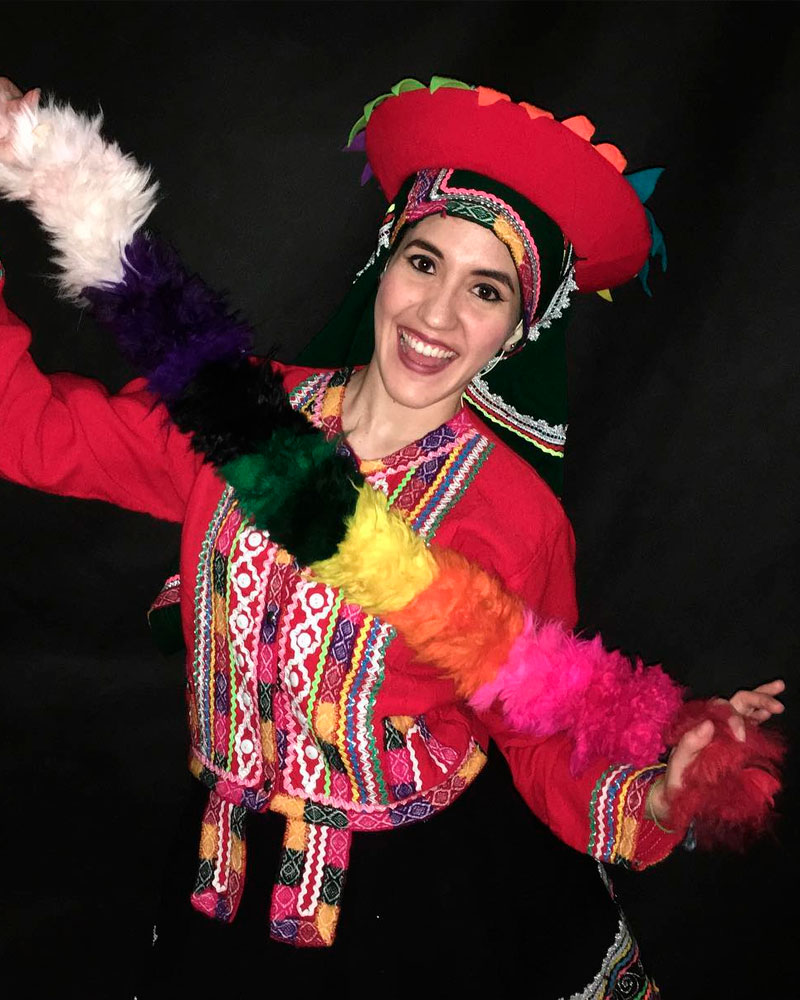
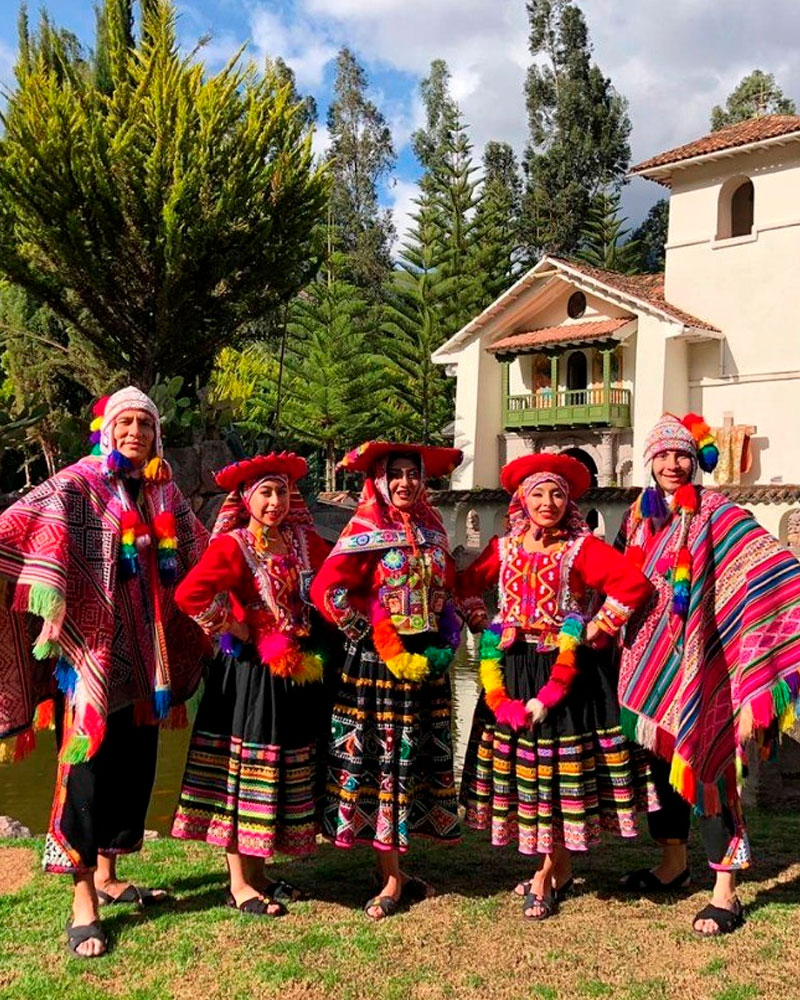
Huaylas
This music is similar to huayno and is popular in the central highlands of Junín, Huancayo, and Huancavelica. The music often sings of the farming lifestyle, and the accompanying dance movements mimic potato planting, cultivation, and harvest.
Yavarí
Another type of folkloric music, yavarí, brings Spanish influences into Inca-type musical patterns. It originated in Arequipa in the 1600s-1700s. These songs are often slow, deeply sad, and romantic, flowing from the deep feelings of indigenous populations. Peru’s most well-known song, “El Condor Pasa” (The Condor Passes), is an example of this genre. The word yavarí has roots in a Quechua word meaning “poem.”
Muliza
Truly a worker’s tune, this traditional music was born in Peru’s central Cerro de Pasco region. It originated among muleteers (muleros) who moved minerals between the area’s mines to northern Argentina. Mines in this country were exploited by the conquistadors in the 1700s. The music was created in Peruvian and Argentine highland styles with Spanish influences. The lyrics express the problems and hopes of the people, as well as feelings of solitude on their long journeys across the countryside. The saxophone is the protagonist of these songs.
Chicha / Andean Cumbia
Chicha music is the Peruvian Andes’ most recent addition to its repertoire. Between 1950 and 1980, highland inhabitants migrated to coastal cities to find better economic opportunities. Of course, they carried traditional huayno music with them. At the same time, cumbia was arriving in Peru from Colombia, and psychedelic rock was becoming popular in the Americas. The three genres came together to form a techno version of traditional Andean music with a somewhat tropical feel. It’s listened to all across the Andes today! This music is heavy on electric guitar, bass, drums, keyboard, and synthesizers.
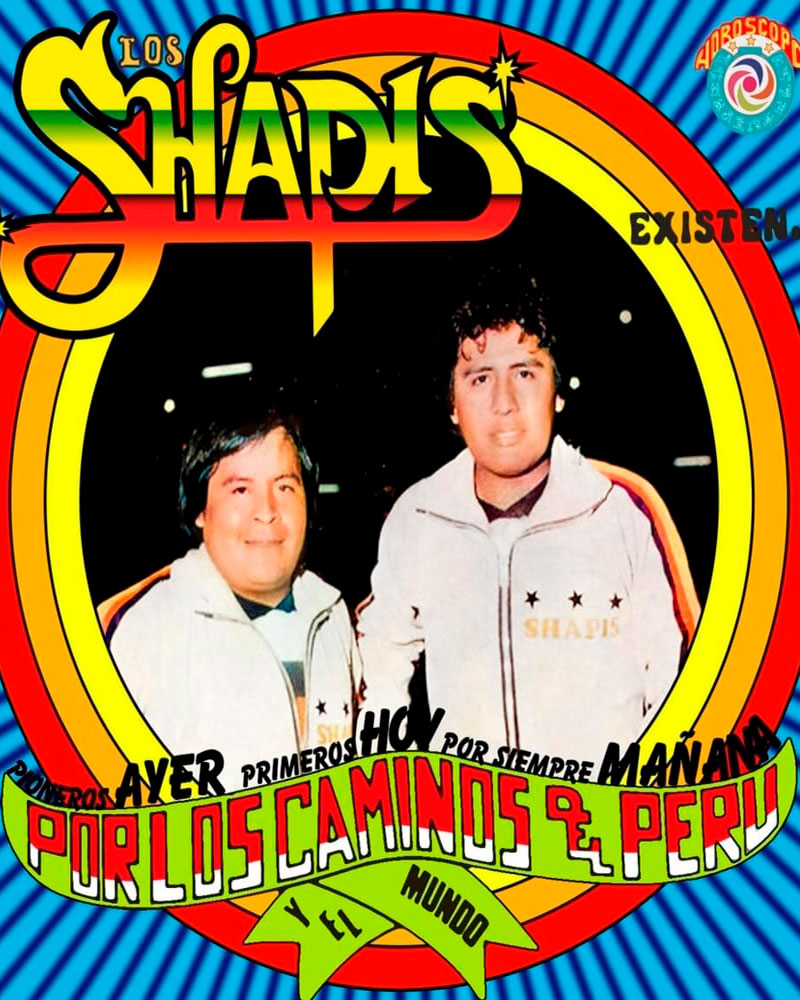
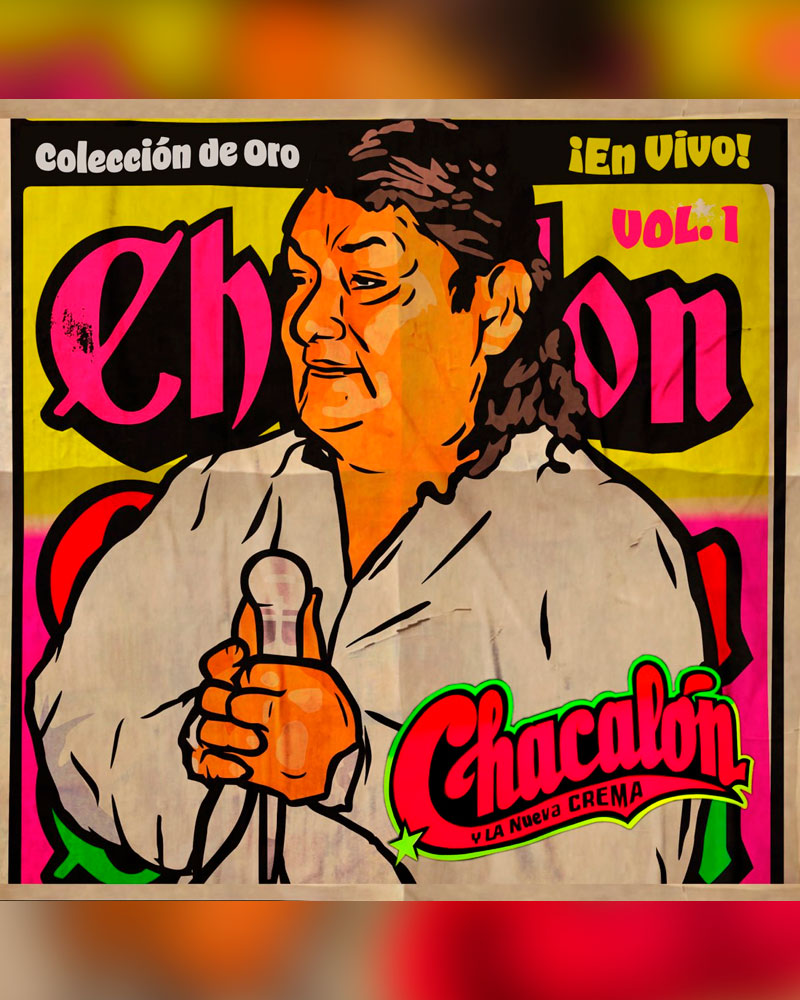
Amazonian
The Amazon is an Eden of plant and animal materials, and these resources were used to make the rainforest’s first instruments. Residents are known to be festive and excited, full of vibrant energy. Traditional music and dance have always been an important part of the culture. The rubber boom from 1885-1915, the oil boom in the 1960s, and logging and mining throughout the years made the Peruvian Amazon a surprising meeting place for intercultural exchange.
Throughout the years, music from other parts of the country arrived in the jungle and was blended with the indigenous musical styles in a beautiful fusion of cultures.
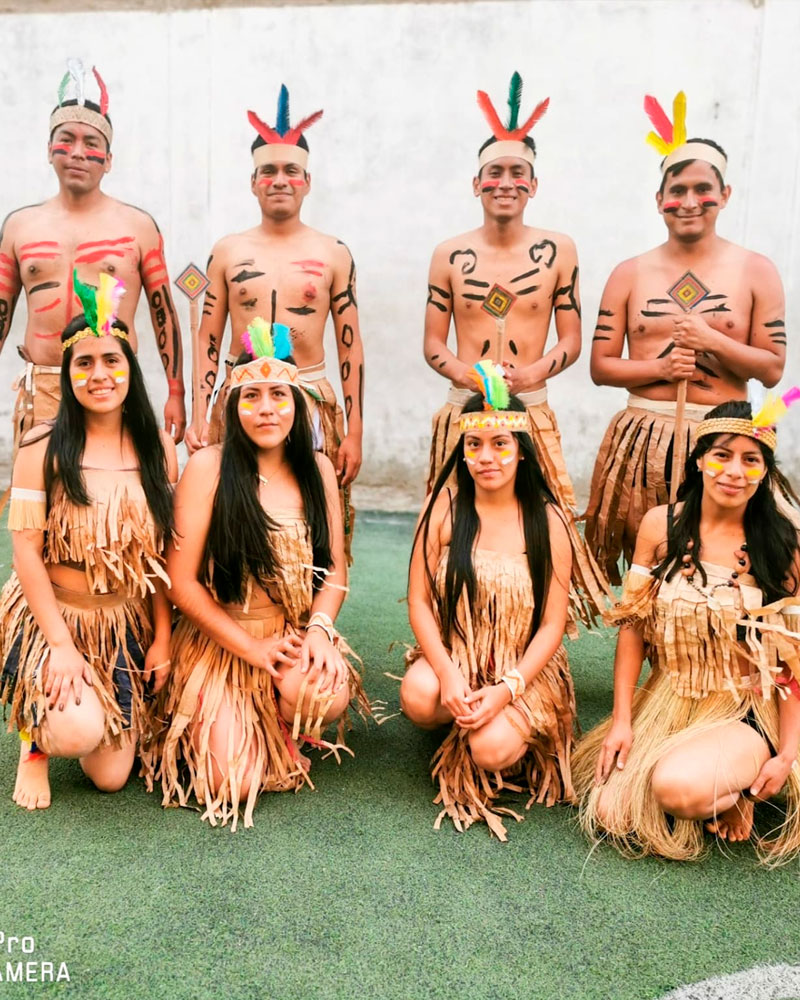
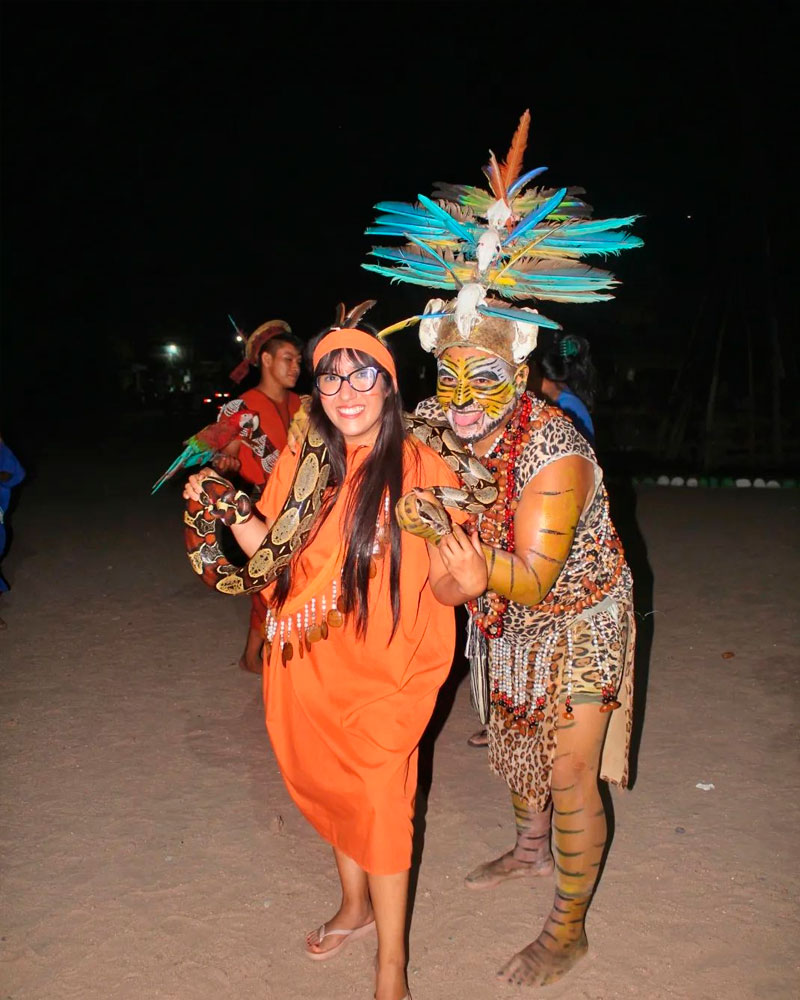
Instruments: various types of animal-skin drums, Amazonian quena, and pífano (wind instruments like a flute), maracas, manguaré (large log percussion instrument)
Native music from the Peruvian jungle is upbeat, happy, and fun, reflecting the quintessential liveliness of the region’s people. It’s usually instrumental (with instruments made from the natural materials of the Amazon) and almost always has a spirited dance to go along with it! The main sounds are flute-like and natural percussion. Later on, new instruments were brought by visitors added in, such as the guitar.
Amazonian Cumbia
Instruments: timpani, guitar, bass, accordion, banjo, conga, synthesized beats
The oil boom in the 1960s connected the jungle’s people to the rest of the country, and yet another form of cumbia was created, this time influenced by Amazonian instruments and musical styles. The lyrics speak of customs and traditions of the region and showcase the representative joy and vigorous energy of the rainforests’ inhabitants. The dances highlight traditional outfits. Some songs include sounds of the Amazon, such as birdsong.
Creole
This set of genres is truly the grand conglomeration of all the ethnic groups who now call Peru home. It’s crafted from the Spanish, African and indigenous cultures that all converged here. It emerged with the arrival of the Spanish, who brought African slaves with them for manual labor. Before 1950, this type of music was only showcased in private gatherings as it was not accepted by the ruling conquistadors.
Instruments: Peruvian cajón, creole guitar, accordion, saxophone, banjo, piano, violin, lute, castanet, bandoneon, quena (wind instrument similar to a flute), harp, double bass, drums
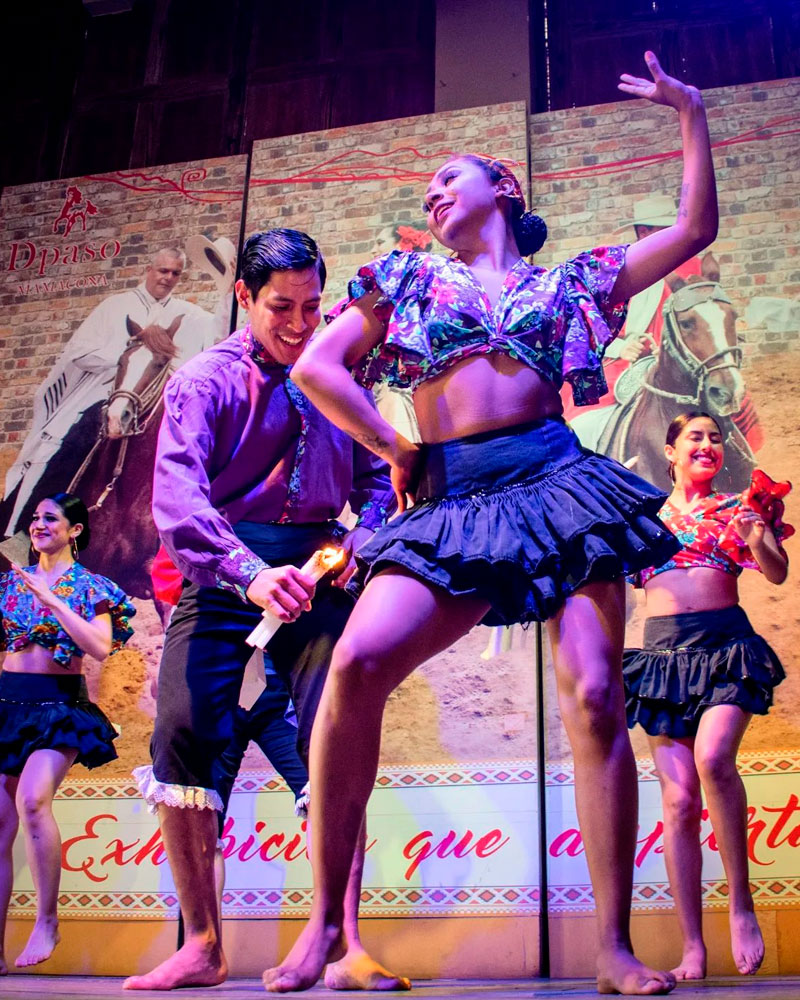
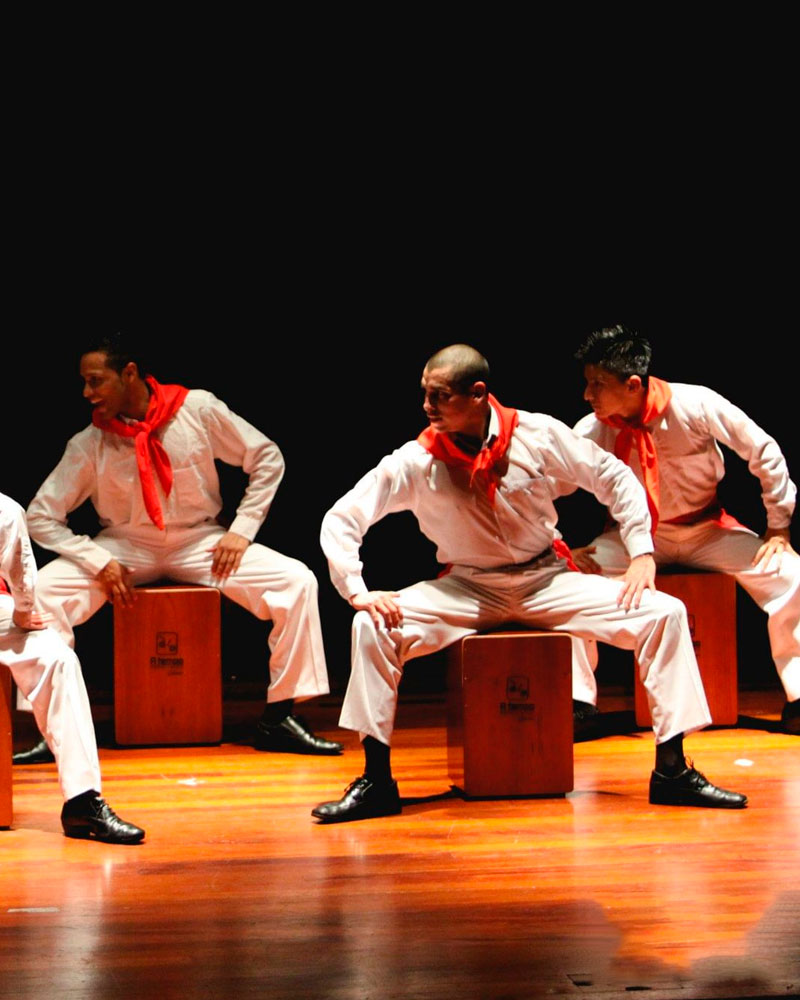
Vals
The flowing vals is the Peruvian waltz formed in the 1800s-1900s. Of course, it’s based on the famous European waltz but has obvious elements of traditional Peruvian and African music. These elements were naturally added to this classic dance as it made its way into the lives of commoners. It’s slow, light, cheerful, and nostalgic music to sway to with a partner. The songs are the joys, hardships, triumphs, and traditions of everyday life put to music.
Polka
This type of music originated in the Czech Republic, but with Spain’s arrival in Peru, a new version was formed here in the 1940s with Peruvian and African components. It’s fun, lively, and upbeat, with a jumping rhythm meant to incite movement and interaction. The polka was originally danced at parties of the upper class of Lima before becoming popular in get-togethers of all classes and being transformed into a more traditional type of music. The lyrics generally express happy themes!
Marinera
The lovely, world-famous marinera is the charming national dance of Peru, born in the 1600s. It was influenced by 3 main dances: the Spanish fandango, the African zamacueca, and the traditional Andean courtship dancing of the highlands. It’s truly a treat to watch dancers put on the sensual, intimate, and flirtatious show of the marinera, which represents young lovers’ courtship. Handkerchiefs are the trademark accessory of the marinera dance.
Each region of the country has its own version of this performance, but each has an air of royalty and sophistication in both dress and movements. The music can also cue Peruvian Paso horses to dance with their human counterparts!
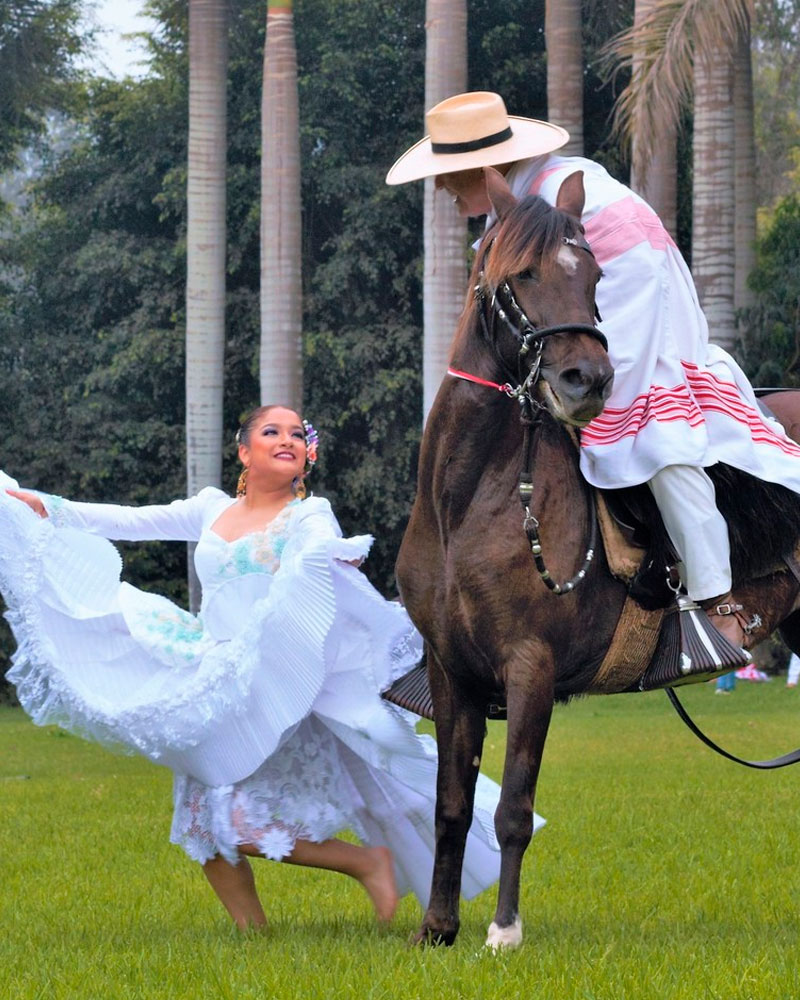
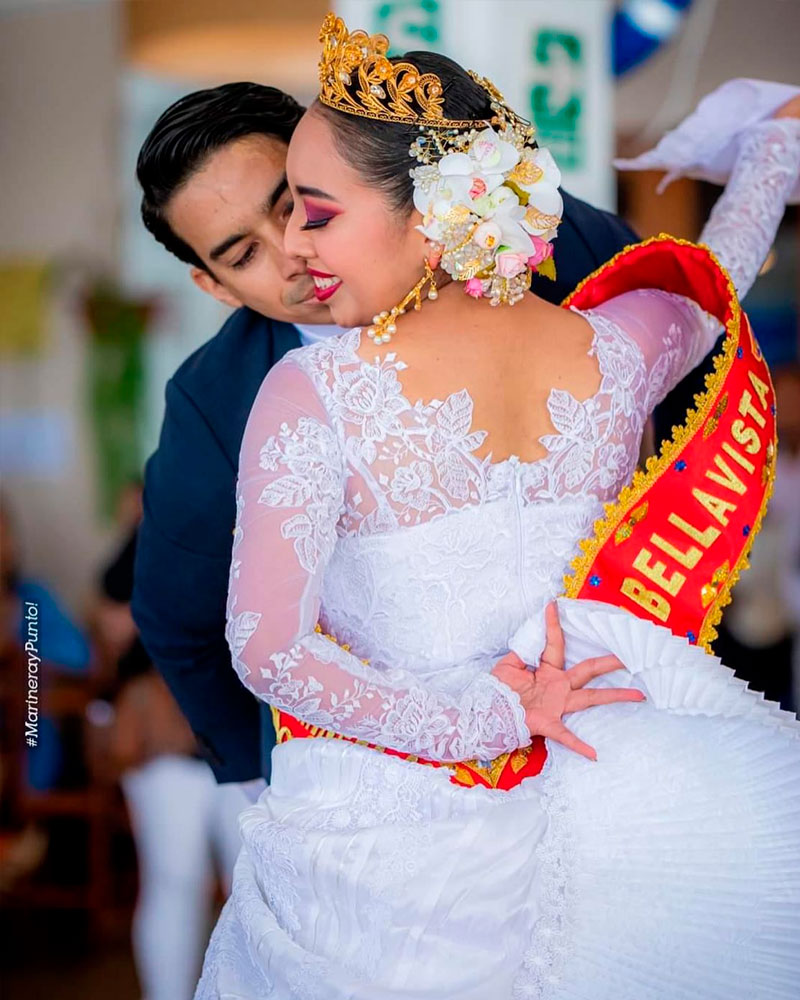
Afro-Peruvian
The musical language of Peru’s African migrants is one of the country’s most colorful and exciting styles. African slaves were imported to Peru from 1532 (when the Spanish arrived) until it was outlawed in the 1850s. By the 1800s, this interesting type of musical fusion had been developed.
Slaves weren’t allowed to have or use instruments in order to not lift their spirits, but they found new ways to make music. Some unique instruments they used were jawbones and teeth of donkeys (quijada), tea trunks and shipping crates (cajón), collection boxes from the church (cajita), gourds (checo), hallowed logs, ceramic jars, etc. plus clapping and stomping.
There are several types of music within the Afro-Peruvian genre: festejo, landó, tondero, zamacueca and contrapunto de zapateo. To this day, afro-Peruvian music maintains a peculiar African tribal sound with a Latin flavor.
Tropical
Tropical Latin America, especially the Caribbean coast, is known as a place of high energy, smiles, and exciting dancing! The bustling seaside cities of South and Central America have fostered several types of upbeat music meant for dancing happily and attracting the attention of suitors. These highly catchy rhythms make any Peruvian get up on their feet and move! To the untrained ear, each is hard to differentiate from the next, but they are each definitely unique and different in their own way.
Instruments: clarinet, trombone, saxophone, trumpet, drums, bongos, guitar, accordion, flute, piano, cowbell, maracas, güira (metal scraping instrument), bandurria (guitar-like instrument).
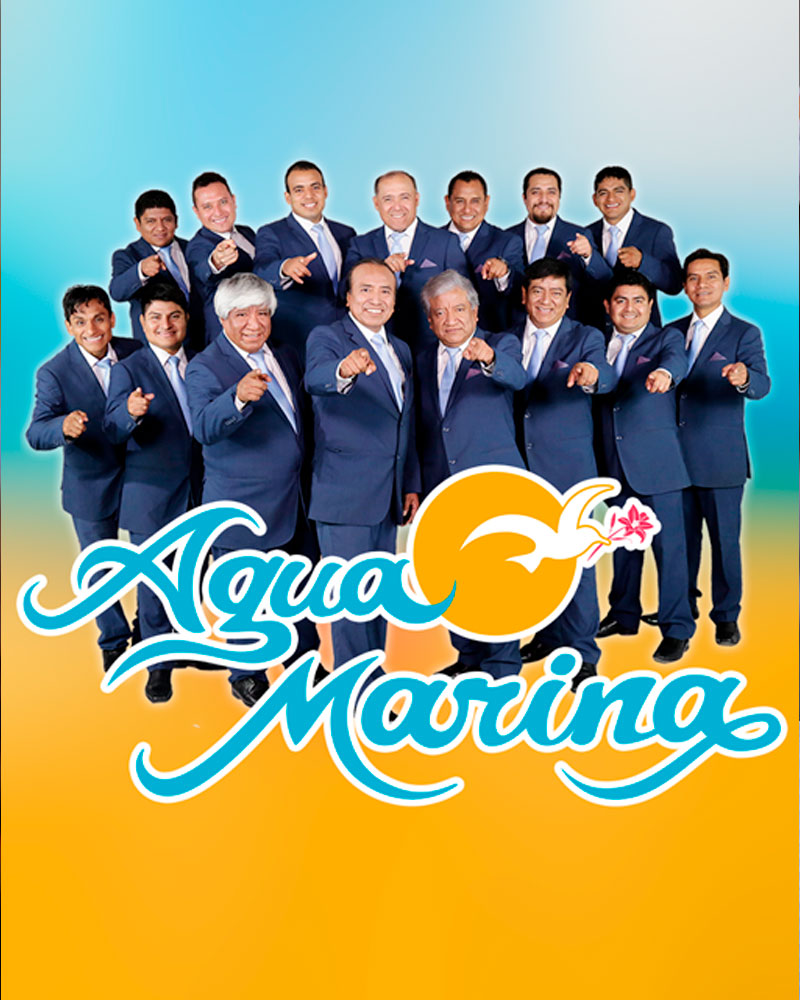
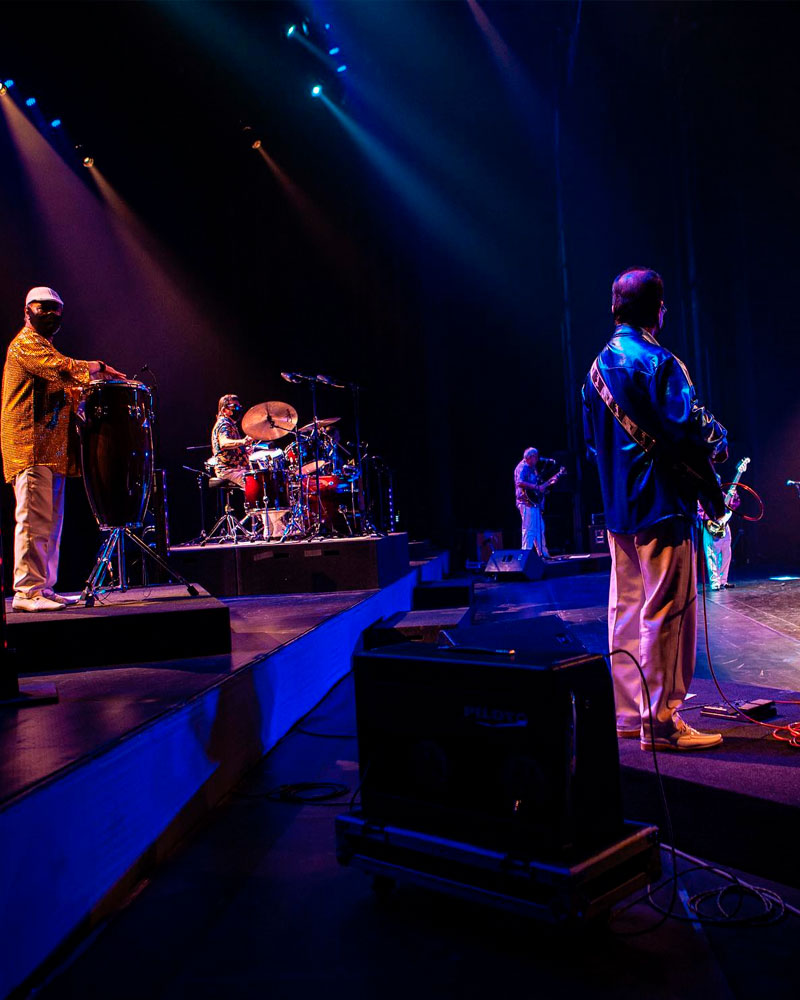
Peruvian Cumbia / Coastal or Northern Cumbia
This type of music emerged in the 1960s after the original cumbia of Colombia (itself a mixture of indigenous, Spanish, and African influences) arrived in Lima and was mixed with Peruvian elements, including Andean, Amazonian and coastal influences. It’s upbeat and catchy! Some say Peruvian cumbia is the same as chicha music, but I hear a big difference. Chicha music came about later when psychedelic rock and techno influences were added into the mix. Peruvian cumbia sounds more folkloric/traditional than the other tropical musical genres listed here.
Salsa
Most of the world is familiar with salsa music, but it’s wildly popular, especially in Latin America! It’s lively and cheerful even when singing of sadness or heartache. Its strong beats are maintained by various percussion instruments that jumpstart the heartbeat of its listener. It’s a fusion of several Cuban rhythms with North American dancing styles like swing and tap. Be sure to take a salsa class when you’re in Peru – it’s one of the most romantic things to do here!
Merengue
In the Dominican Republic and Haiti in the 1800s, folk dancing began to be formed into what we know today as merengue by fusing with African and French rhythms and Cuban dance moves. It has a light, bubbly feel, and a fast-paced marching beat.
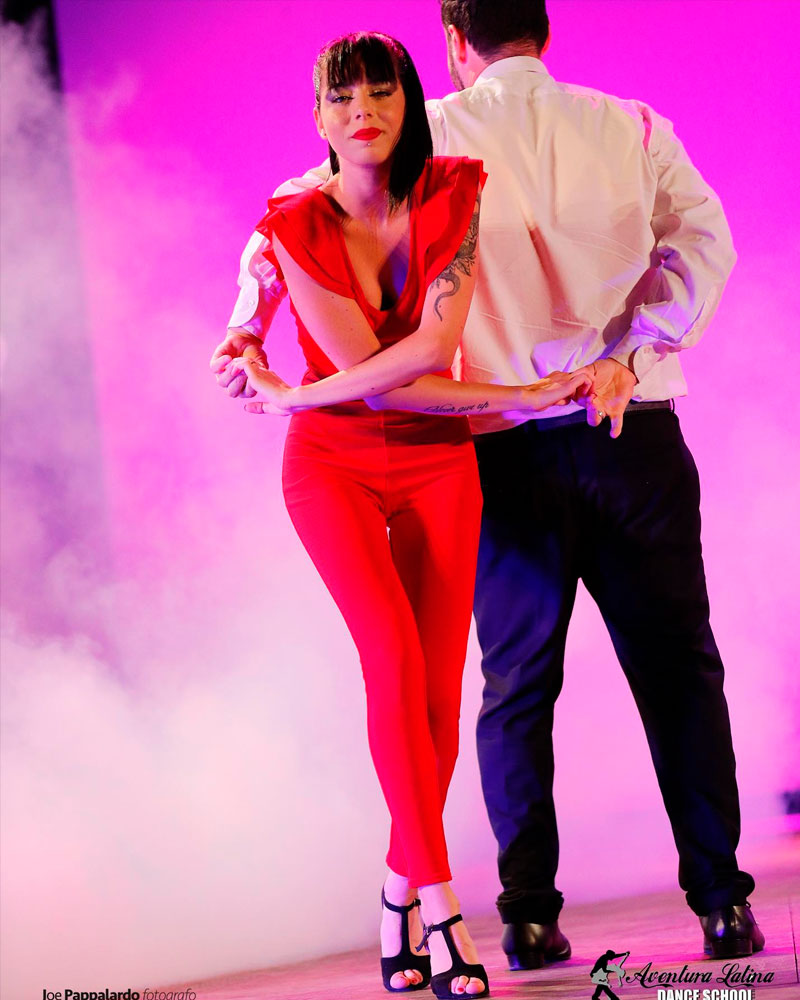
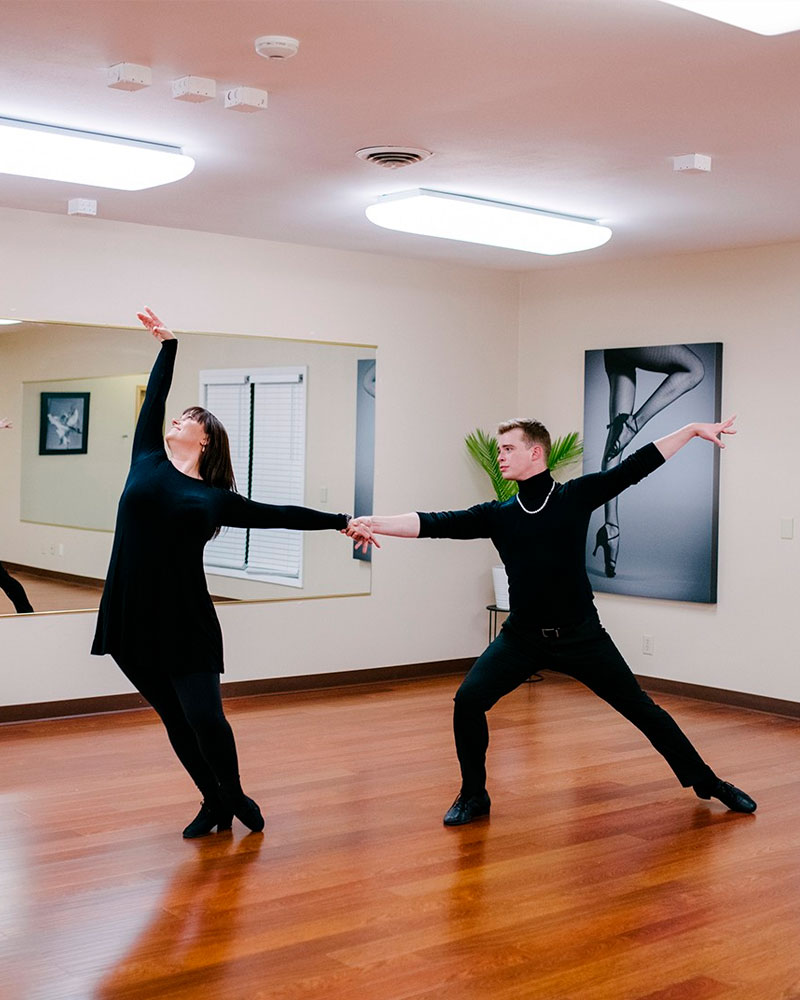
Bachata
Bachata is a newer musical style also born in the Dominican Republic in the 1960s. Its accompanying dance, like merengue, includes Cuban dance steps. This music and dance are sensual, intimate, and romantic but upbeat. It was rejected by the upper class of society until the 1990s, seen as an unsophisticated representation of the crude, vulgar, and criminal lower class.
Modern
Latin Ballads
Instruments: orchestra, synthesizers, acoustic and electric guitars, bass, drums, piano, percussion
Latin America followed suit with the musical world of the United States, Italy, and France in recording romantic ballads and soft rock for the Spanish-speaking world in the 1960s. The style was also influenced by Latin American bolero music from the 1950s and new wave rock and roll from Mexico, Argentina, Brazil, and Chile. These songs are slow and cheesy, always talking about L-O-V-E. They’re meant to be dedicated to your sweetheart to make an impression and tell them how much you love them. Of course, Latin America is known for its sensitivity and emotional expression, so the lyrics of profound feelings can be incredibly deep and dramatic.
Rock in Spanish
Instruments: acoustic and electric guitar, bass, drums, keyboard
Starting in the mid-1950s, Latin America began releasing music in Spanish based on the rock and roll of the United States. Spanish rock music produces the same nostalgic feelings for Latinos as English rock does for each in their respective countries. It took all the same twists and turns as rock did around the world: soft rock, hard rock, acid rock, heavy metal, punk, etc.
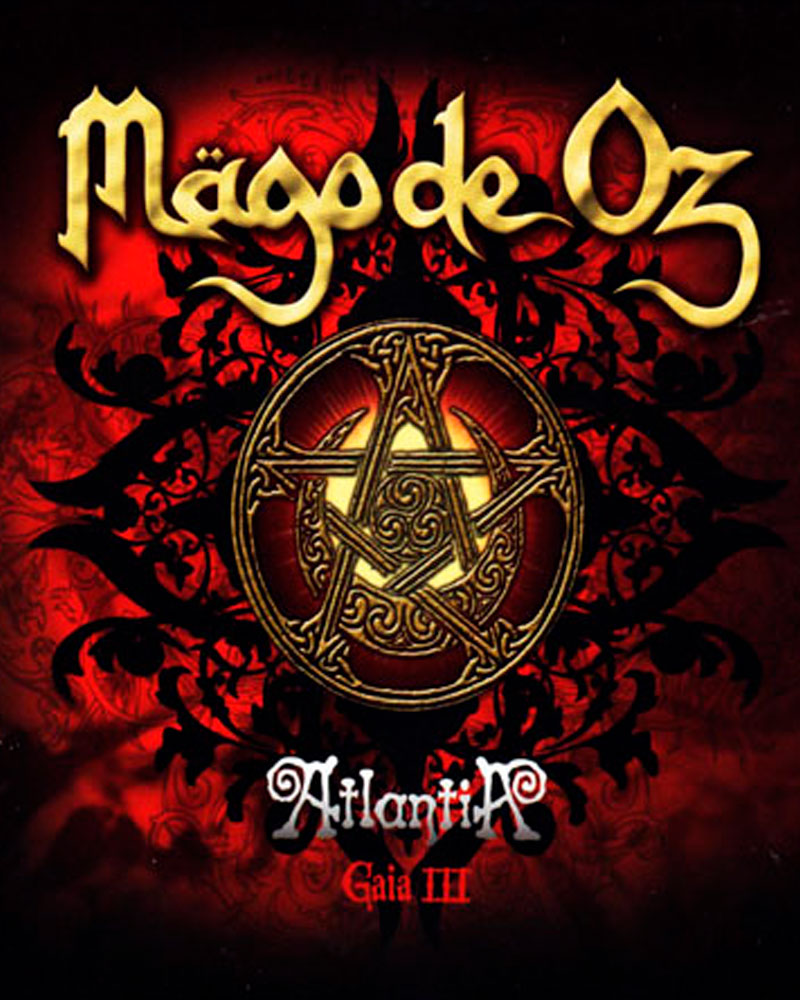
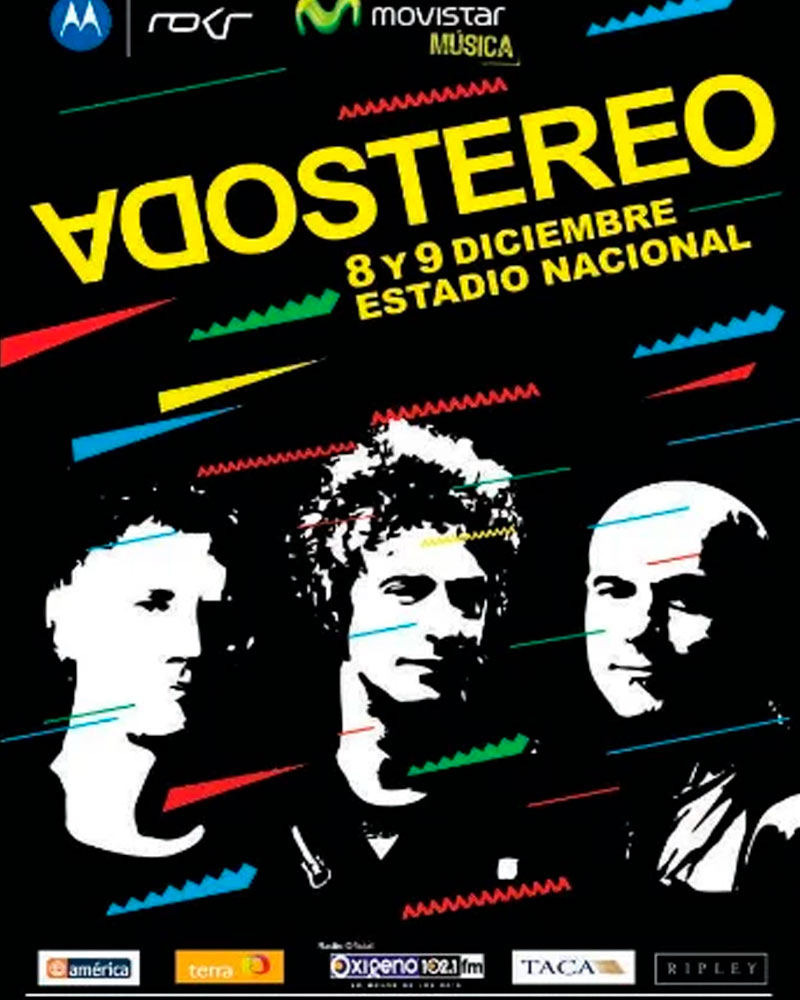
Reggaeton
Instruments: electronically synthesized beats, keyboard, electric guitar
The wildly popular, modern music of Latin America’s newest generation is a fusion of Jamaican reggae and North American rap, hip hop, and techno with Latin musical styles, language, and culture. It started in the 1980s in Panama and Puerto Rico and quickly crossed borders to the Spanish-speaking world. It’s the most common club music and is popular with Hispanic youth around the world. The lyrics are often vulgar and obscene, talking of sex, infidelity, partying, violence, drugs, misogynism, etc.
Latin Pop
Instruments: maracas, bongos, guitar, bass, drums, synthesized beats, piano
Also arising in the 1980s is another upbeat form of modern Latin music: Latin pop. This music is smoother than reggaeton and can be for dancing, celebrating, hanging out, exercising, cleaning or driving in the car. It’s like pop music in other parts of the world but in Spanish and with Latin rhythms borrowed from salsa, samba, bachata, merengue, cumbia, etc.
Conclusion
Plato said, “Music is a moral law. It gives soul to the universe, wings to the mind, flight to the imagination, and charm and gaiety to life and to everything.”
Billy Joel said, “I think music in itself is healing. It’s an explosive expression of humanity. It’s something we are all touched by. No matter what culture we’re from, everyone loves music.”
Victor Hugo said, “Music expresses that which cannot be said and on which it is impossible to be silent.”
Marilyn Manson said, “Music is the strongest form of magic.”
It’s pretty clear that music is an incredibly powerful force in our world and, in some way, it connects us all. It helps us tell our stories and revitalize our relationships. It helps us both analyze reality and escape from it. Discover Peru and South America through music!
Written by: Bethany Iversen Marrou


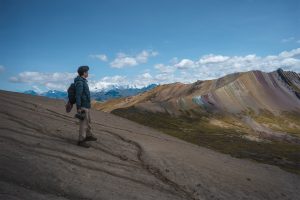
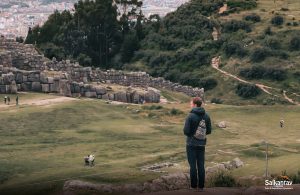
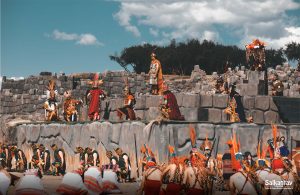
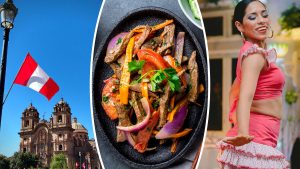

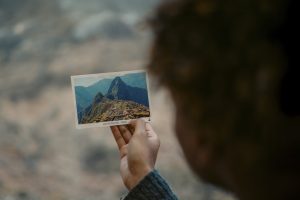
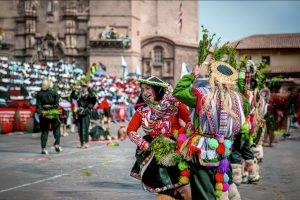
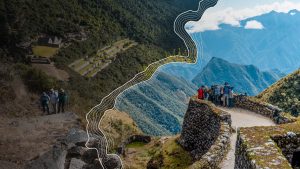
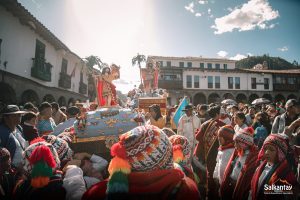
Leave A Reply